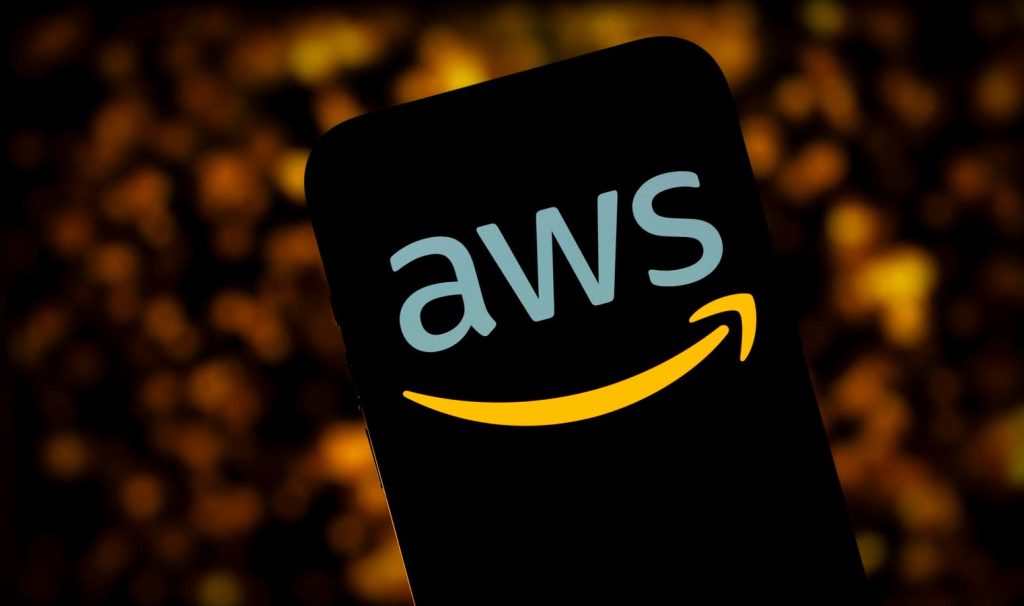This Sunday, November 27, is the beginning of the annual AWS Reinvent conference—one of my favorite events, and one that I’ve attended eight different years. (The company styles it “re:Invent,” but I’m going to use “Reinvent” for simplicity and to adhere to the Forbes style guide.) In my opinion, AWS puts more into this premiere event than any other company I track.
That’s why I was excited to talk with Matt Wood, whose modest “vice president” title doesn’t do justice to his role overseeing AWS’s products—meaning thousands of products he has helped launch since he joined the company at its inception 14 years ago. During our conversation, Wood spoke about the evolution of Reinvent, key themes for this year’s version, why Reinvent is his favorite week of the year and how he hopes attendees will benefit from it.
Full disclosure: AWS has a paid analysis engagement with Moor Insights & Strategy, as do its competitors Microsoft Azure, Google Cloud, Oracle Cloud and IBM Cloud, among others. That said, AWS had no editorial input on this piece, which represents my own analytical viewpoint.
The Growth Of Reinvent And The Challenge Of Keeping It Fresh
Wood joined Amazon when AWS was getting started in 2010 and has been a part of every version of Reinvent. Whenever I talk with him, I’m struck by his enthusiasm for the business and his excitement about the process of growth and discovery in general. That fits with his background: after attending medical school, Wood completed a Ph.D. in machine learning—expertise he applied to protein structure prediction, genome sequencing, genome visualization and other areas of bioinformatics before joining Amazon.
So how has Reinvent changed over the years? “I remember arriving in Las Vegas for the very first Reinvent in 2012,” Wood said, “and walking into the keynote hall. It was set up for 3,600 people, which was everybody [who attended]. Just thinking, oh my God, this is enormous. Like, I can’t imagine it getting any bigger than this.”
We both laughed at that joke, because this year’s event will host something like 60,000 people. And instead of the 150-plus sessions of the 2012 iteration, this time there are more than 2,000 innovation talks, builder labs and technical sessions on every imaginable topic connected to AWS’s business. Instead of happening at a single hotel, it now takes over most of the Las Vegas Strip, with sessions in six different facilities and attendees sleeping in an additional ten hotels.
The risk is that an organization of AWS’s size—an $80 billion business ranked No. 1 in infrastructure as a service, embedded within $500 billion Amazon—could make the event unwieldy or unresponsive to the needs of the people attending it. And Reinvent might have turned into that, if it was conceived as a sales and marketing event like so many company conferences are. But Wood and his team have always had a different aim.
“One of the things that we’re super passionate about and I think our customers appreciate,” Wood said, “is we really try and make these conferences about education and learning.” He added, “They are primarily a way for our customers to learn as much as possible in as high-bandwidth a way as possible to get the maximum possible use of their time.” Having attended who knows how many hundreds of tech conferences, I can tell you that the Reinvent organizers consistently hit that mark.
Wood believes his team’s approach increases responsiveness during the event. As he put it, “When you’re deeply engaged and you care very deeply, you don’t just put the thing on rails, right?” As one example, he mentioned how both senior and junior AWS folks are keen to pick up on attendees’ comments via social media and share them with the team so they can tweak anything that needs it and spotlight the most exciting emerging topics. “These are not remote-control events,” he emphasized, “no matter how long or how many times you’ve done them.”
Reinvent 2023’s Key Themes
There’s no shortage of compelling topics to be covered in the week ahead. Wood said that the Reinvent audience “can expect some news around what we’re doing around custom silicon . . . We continue to be very enthusiastic about our roadmap there [and] we’ve got some new things to talk about.” Custom silicon by hyperscalers like AWS is something that we at Moor Insights & Strategy have covered for a long time, for example in this 2020 piece about AWS’s Inferentia chip or this one from last week about Microsoft’s new chips. I’m convinced it will remain an important area of competition and innovation.
Wood also said that AWS is not slowing down at all in terms of innovation within its well-established infrastructure services. “These are big mature businesses for us for sure,” he said. “And you have hundreds of thousands—millions—of customers using them day in, day out for virtually every workload. But it is still so early in the cloud that there is still so much opportunity to deliver innovation and simplification and invention for our customers.” That is an attitude that reinforces my optimism about AWS, even in the face of its myriad challenges and competitors. Just because you’re the pioneer and the biggest operator in the segment does not excuse you from continuing to push innovation—which AWS has consistently done.
According to Wood, Reinvent will also give plenty of coverage to serverless computing, data and analytics (“such a big leverage point for our customers”) and applications at the top of the stack. He finished his list of key themes by joking, “And then, who knows, maybe we’ll touch briefly on generative AI.” That’s another area I’ve been following in depth, for instance in this piece from earlier this year about Amazon’s Bedrock service, Titan foundational models and related machine learning infrastructure to support AI.
Promoting Business Transformation From Different Angles
In my conversation with Wood, one thing that struck me was his conception of transformation emerging along multiple vectors. He applies this viewpoint to the breadth of AWS’s technologies and to the ways that people can access them by attending Reinvent. He thinks that a person can get a lot out of viewing event sessions online, especially because of his team’s focus on making even the keynotes “very education-heavy” rather than oriented toward marketing or product announcements.
That said, he added that, “I don’t think there’s any substitute for being together in person . . . feeling the energy from Amazon or from customers.” He includes the formal content of the sessions, the side conversations with the people around you and simply the opportunity to “have space away from the daily ones and zeros, the daily work, the inbox—space away from that to take a step back and connect the dots.”
When I mentioned how strongly AWS has always been oriented toward developers, Wood agreed, but he pointed out that Reinvent now appeals to many other roles, including designers, data scientists and AI experts. Still, much of the focus is on developers, IT professionals and the business leaders responsible for technology implementation. According to Wood, “Whether you’re an engineer or an IT pro or a CIO, the attendees at Reinvent are there to accelerate the growth of the business through transformation and reinvention.”
Wood noted that transformation can come from bottom-up or top-down initiatives—ideally both. From the bottom-up perspective of a developer, an IT team or even the CIO, “You can look at all of the pieces that are available to you as an organization and think, ‘How might I use a particular piece of custom silicon to drive down my costs? How might I use a particular instance type? How might I use this particular database capability? How might I use generative AI?’” Working from there, you can dig into the available AWS tools, then prototype quickly to satisfy your curiosity, validate the ideas that work and move ahead to implementation.
“But, of course, you can also work backwards,” he added. A top-down perspective allows you to start with some key area of improvement as a business—growing your user base, developing products, improving your call center experience and so on. “You can say, ‘Well, here are the problems that we have, and let’s work backwards from solving them’” in ways that move the needle. Leadership can then set big top-down goals and challenge teams to meet them.
Ultimately, Wood said, he’ll be happy if someone attending Reinvent comes away with three things. First, he wants them to “learn what they came to learn” in terms of “a deeper understanding of their business, its challenges and the solutions that might help them.” Second, he wants them to “get that spark of an idea . . . something net-new, potentially big, disruptive, that’s going to be needle-moving for their organization.” Third, he wants them to have fun. As he put it, “Building is fun. Getting together is fun. Las Vegas can be fun, for a short amount of time. So did they have fun?” He and his team will be “ecstatically happy” anytime attendees walk away with “the learning, the spark of creativity and the fun.”
The Ecosystem And Competitive Landscape For AWS
I’ve already touched on some of AWS’s strengths and growth drivers, including its scale, range of offerings, broadest custom silicon and genuine commitment to innovation. Unsurprisingly, Reinvent has many corporate sponsors happy to pony up for ready access to AWS customers; these range from big “frenemies” including Microsoft and IBM to important niche operators in many different areas of cloud-related technology. Customer speakers at Reinvent will include senior executives from household names such as Pfizer and BMW, along with AI darling Anthropic.
But for as much as AWS leads the cloud IaaS market from the front, after starting 14 years ago with a simple queuing service, it hardly goes unchallenged. According to Synergy Research, over the past five years—amid a growing market—AWS has maintained around 32 to 33% market share for IaaS, platform as a service and hosted cloud.
AWS faces ferocious competition from Azure and Google Cloud, among others. Azure is its largest competitor, gaining seven percentage points of share over the past five years to put it around 23% overall. Last week, Azure introduced two flavors of in-house silicon, which my colleague Matt Kimball and I analyzed here. Azure also got the market jump on all cloud competitors through its tie-up with OpenAI, but as I’ve always said about generative AI, it will be a marathon, not a sprint. A few months after Azure’s original OpenAI announcement, AWS introduced Bedrock and its own Titan models. I wrote an analysis of that announcement here.
Google Cloud has also made big gains, adding around five percentage points of market share over the past five years, bringing it to 11% overall. CEO Thomas Kurian’s leadership has made a huge difference with his “We won’t share your data” commitment, “We meet you where the workloads are” strategy, investment in field CX staff and big wins in data, analytics and machine learning. You can read my Google Cloud Next analysis here on what the company is doing in generative AI.
Wrapping Up
It’s clear that Wood wants to share his passion for business transformation with Reinvent attendees. “Transformation can come in so many different areas in so many different ways through so many different routes,” he said. “And our goal is to be able to accelerate them all.” He added, “If you’re passionate about transformation, there really isn’t a better place to be, I think on the planet, the week after Thanksgiving than Las Vegas.”
His enthusiasm makes it clear this isn’t just talk. “It really is my favorite week of the year,” he told me. “I genuinely mean that.” After so many years of attending it, I can confirm that Reinvent really does deliver a wealth of ideas. What’s remarkable is the effect it has on Wood. When I suggested he might be tired but happy at the end of the show, he said, “Ironically, I don’t usually leave Reinvent tired. I leave Reinvent ready to go. It’s really, really energizing.”
When I talked with Wood, his camera showed the Jolly Roger flag in his office. He said it was “the friendly reminder to the crew here at Amazon that in periods of discontinuous change, you can’t act like a supertanker. You got to act like a merry band of pirates.”
I’ll be interested to see what Wood and his merry band have cooked up this year. You can expect more from me about what I see at Reinvent—not only in long-form analysis like this, but also in shorter observations via LinkedIn and Twitter.
Read the full article here










